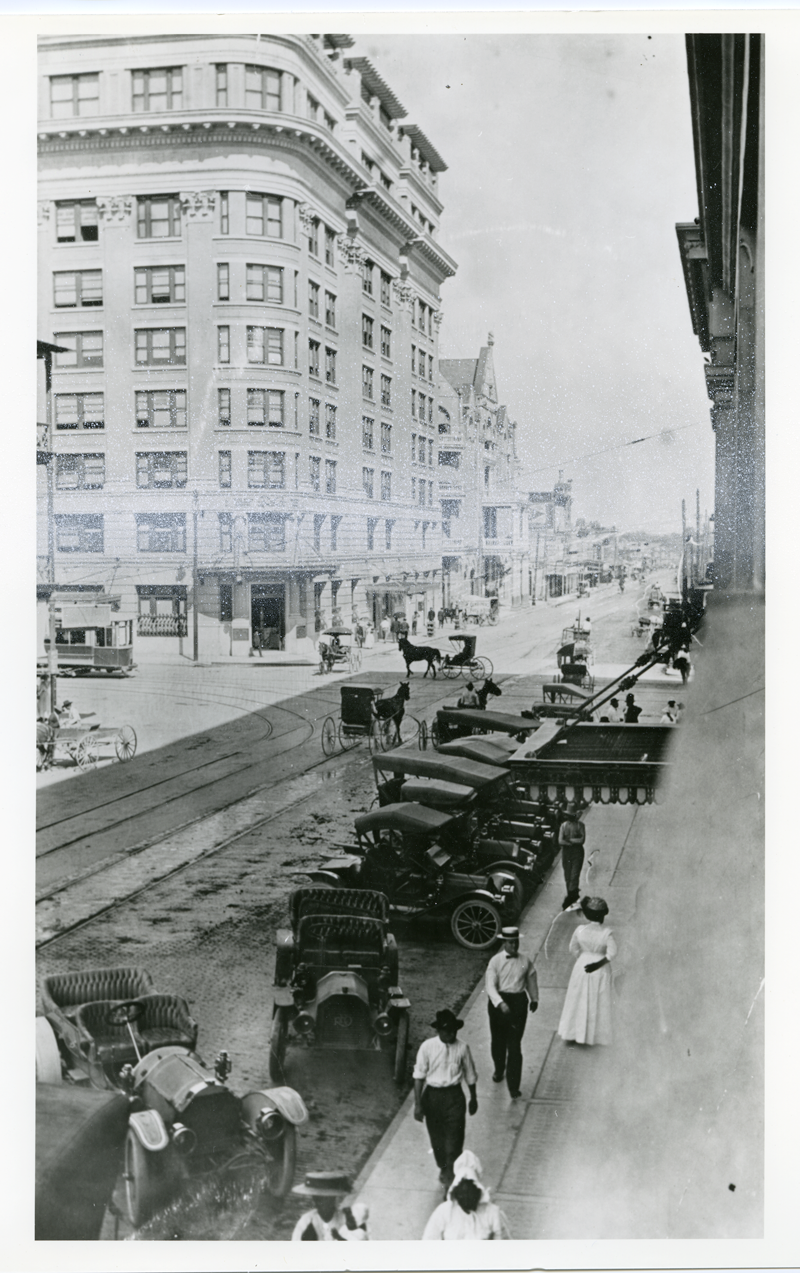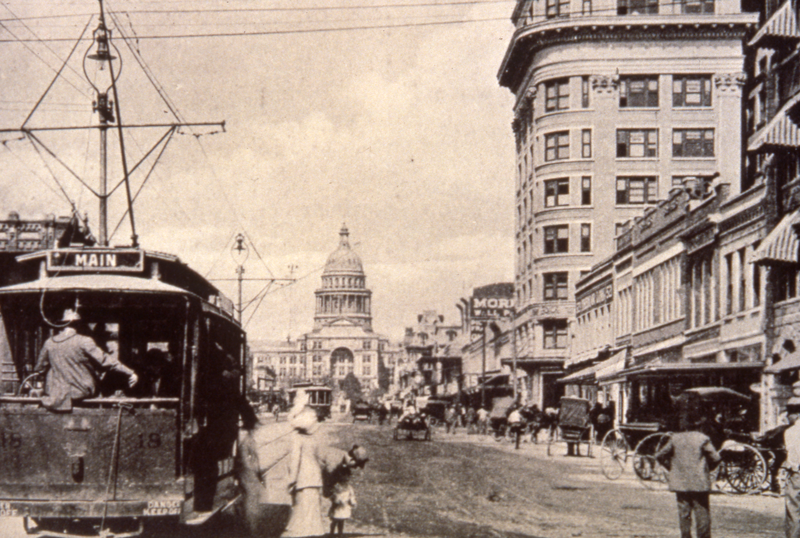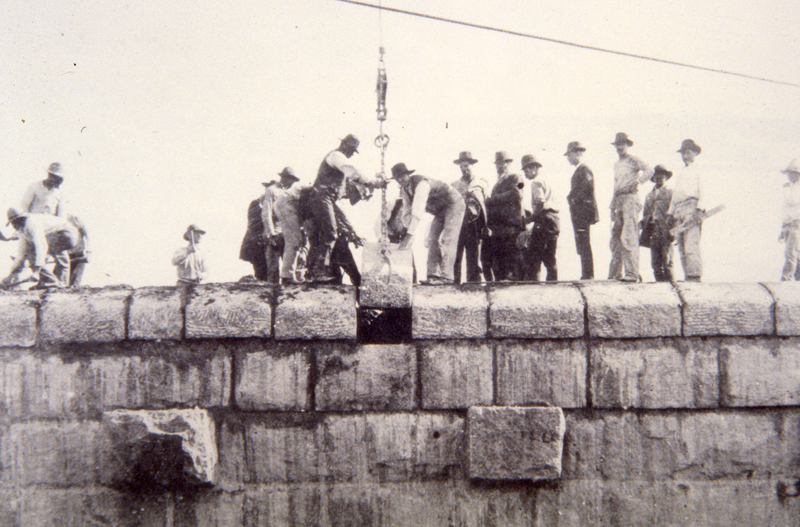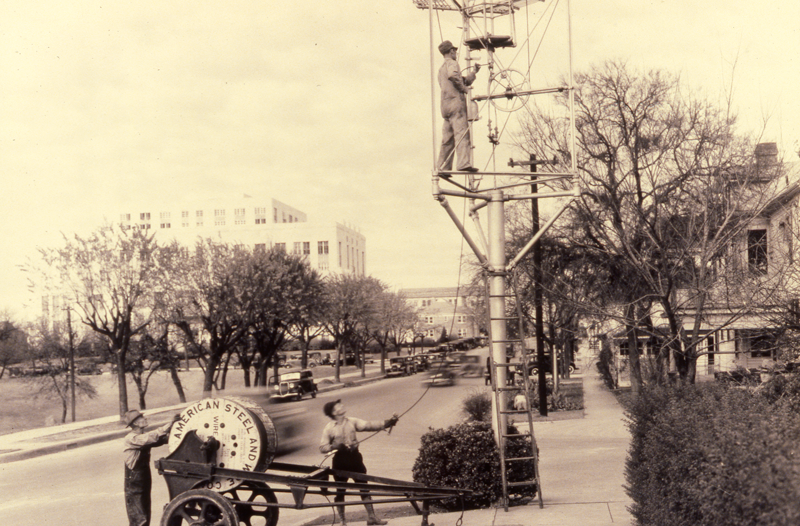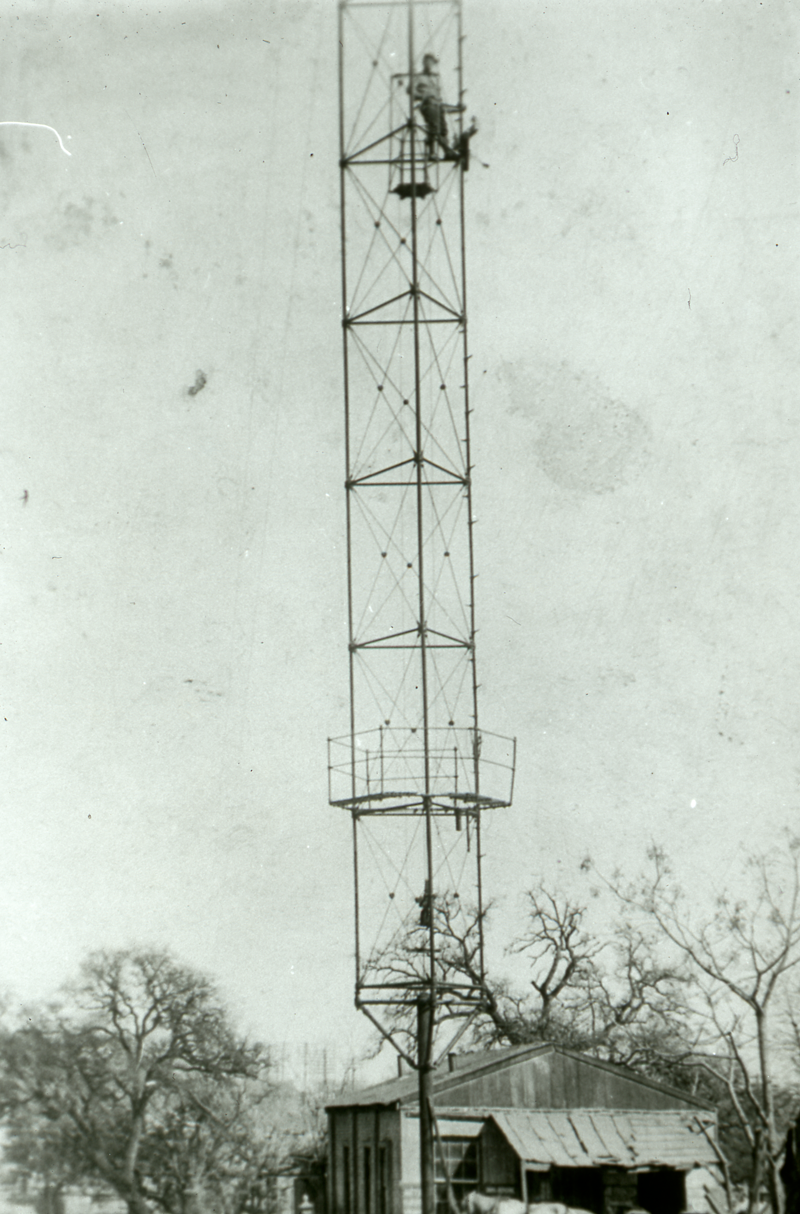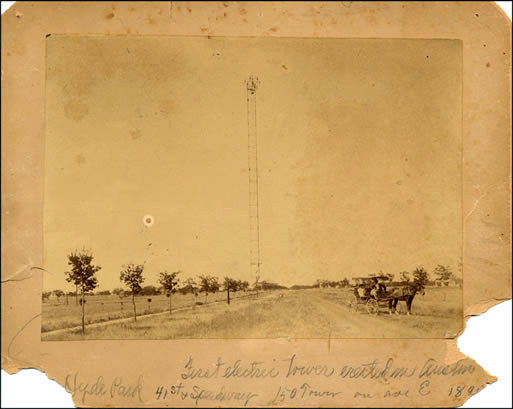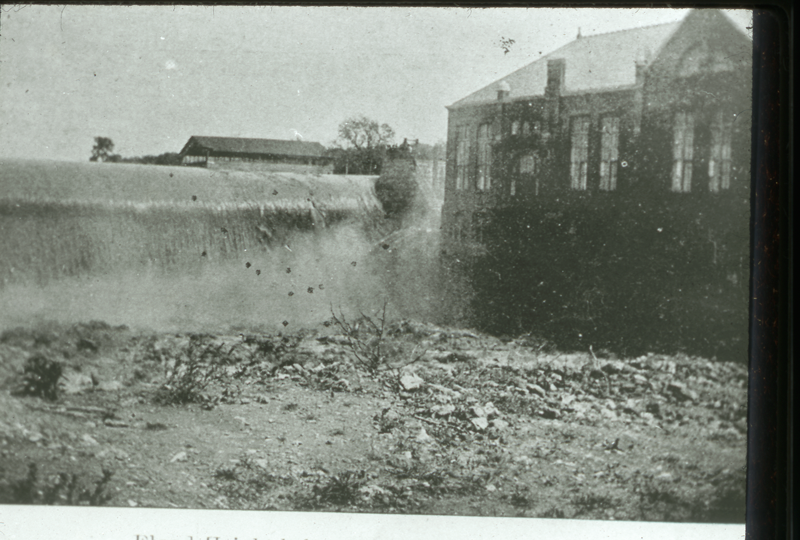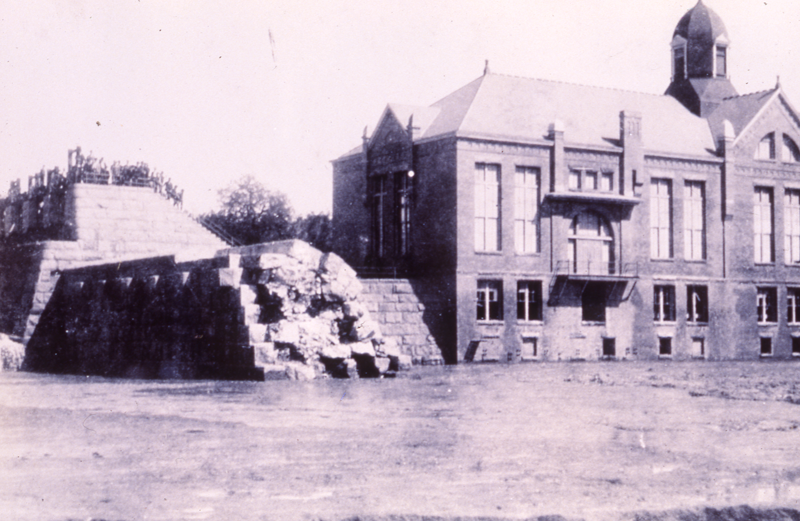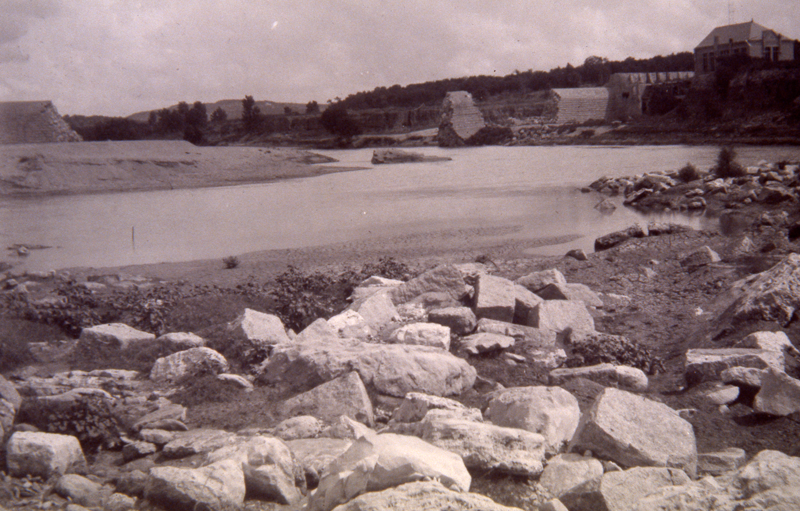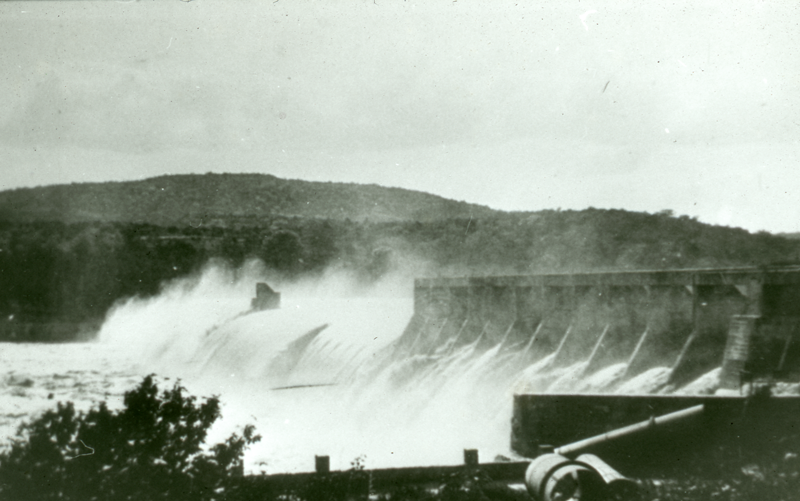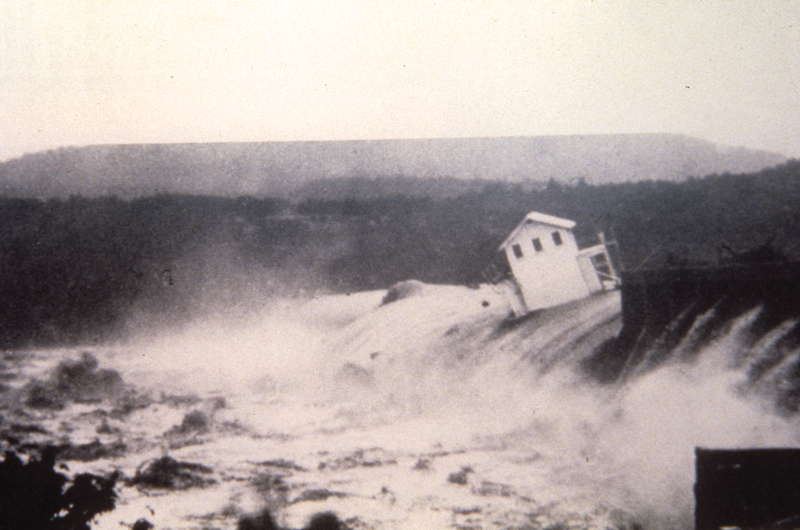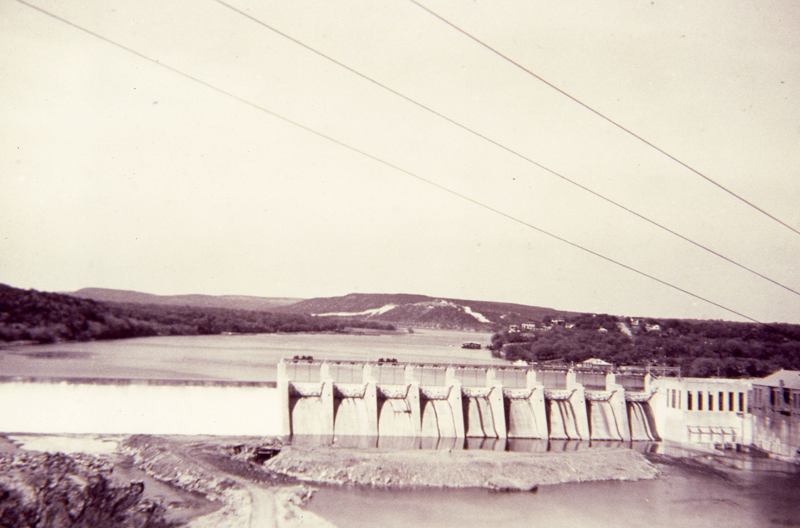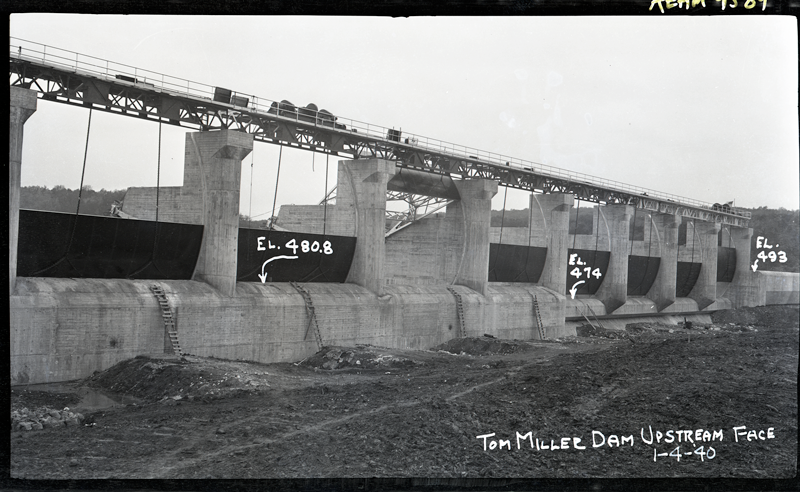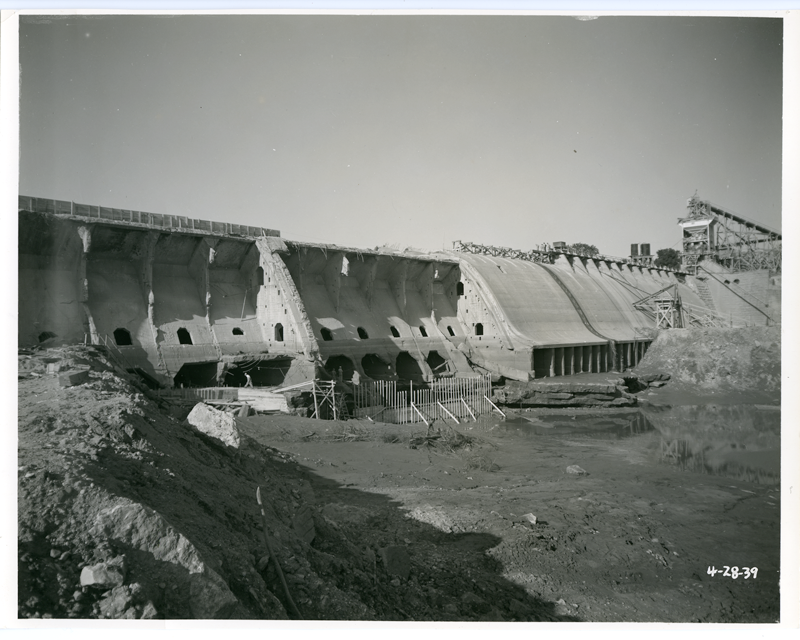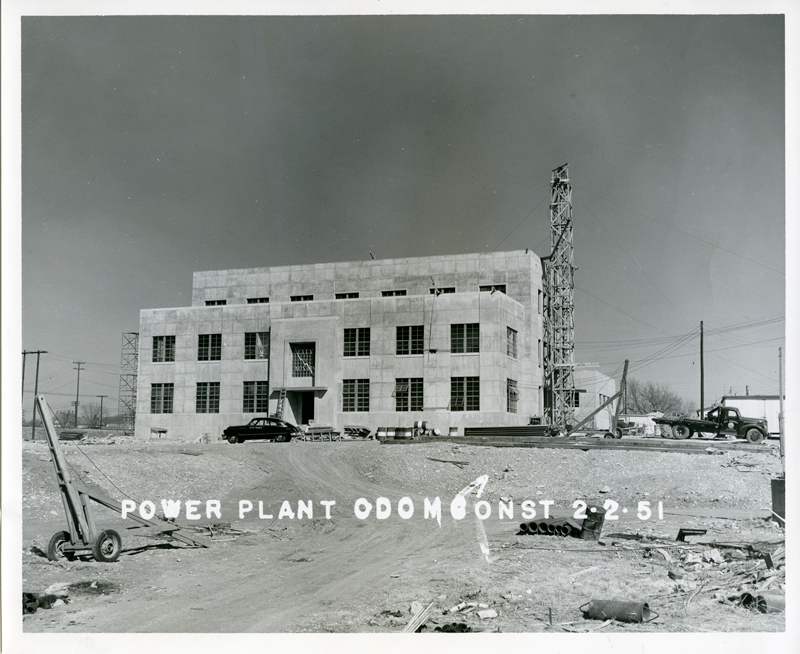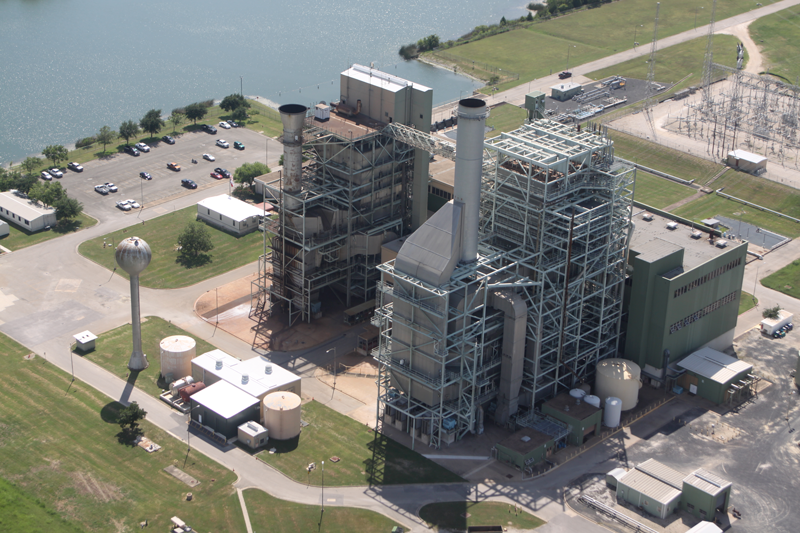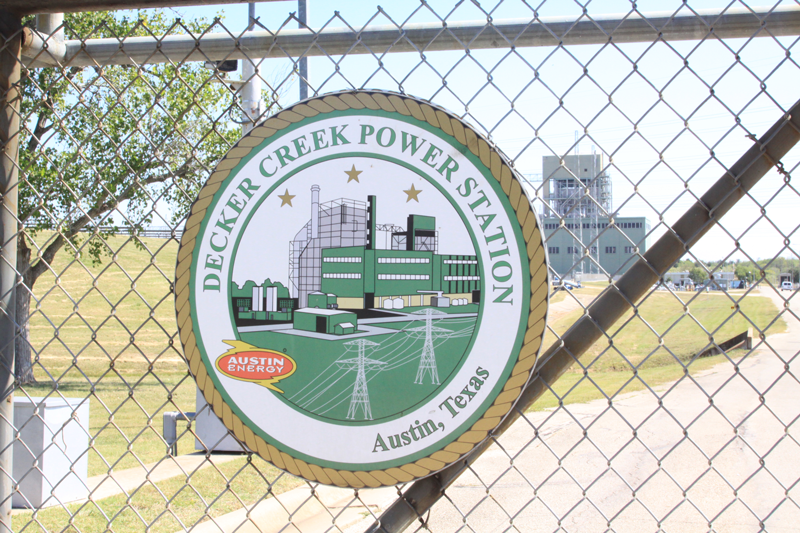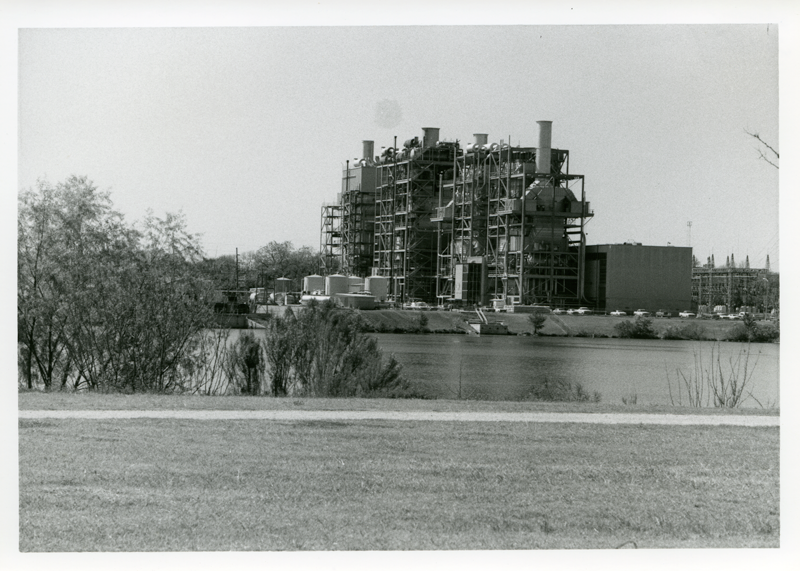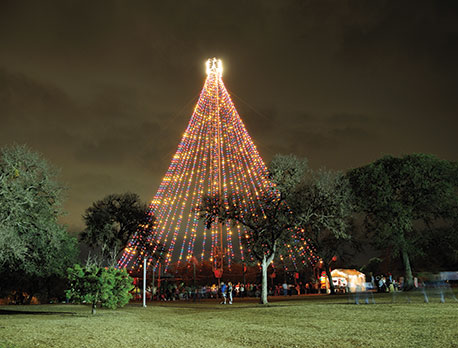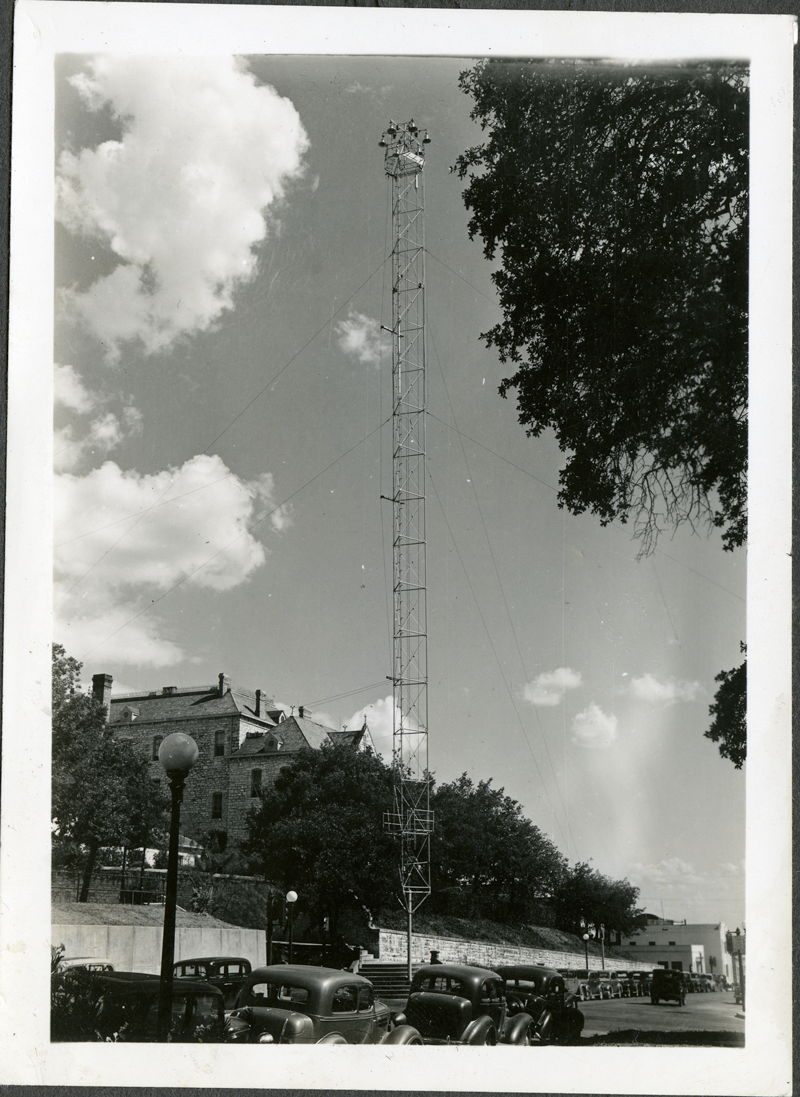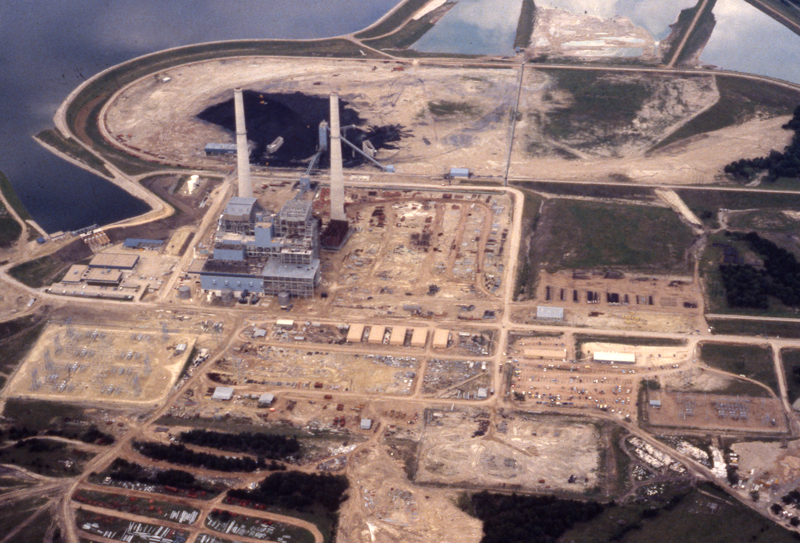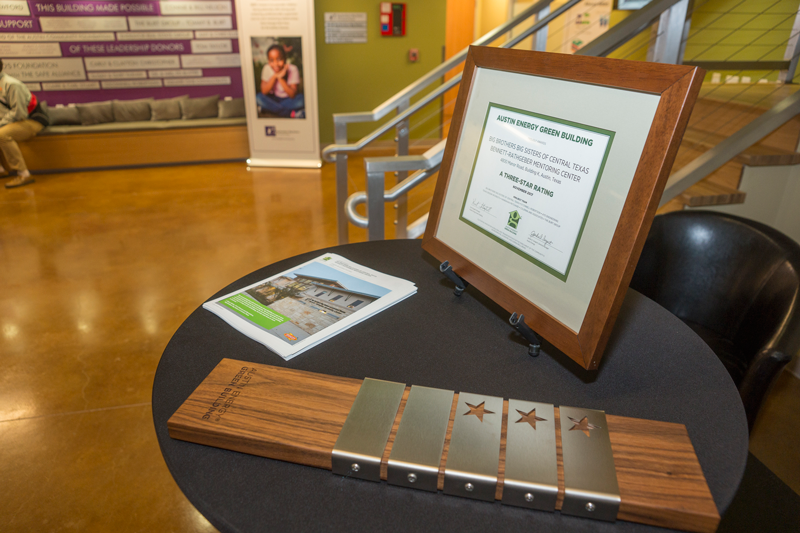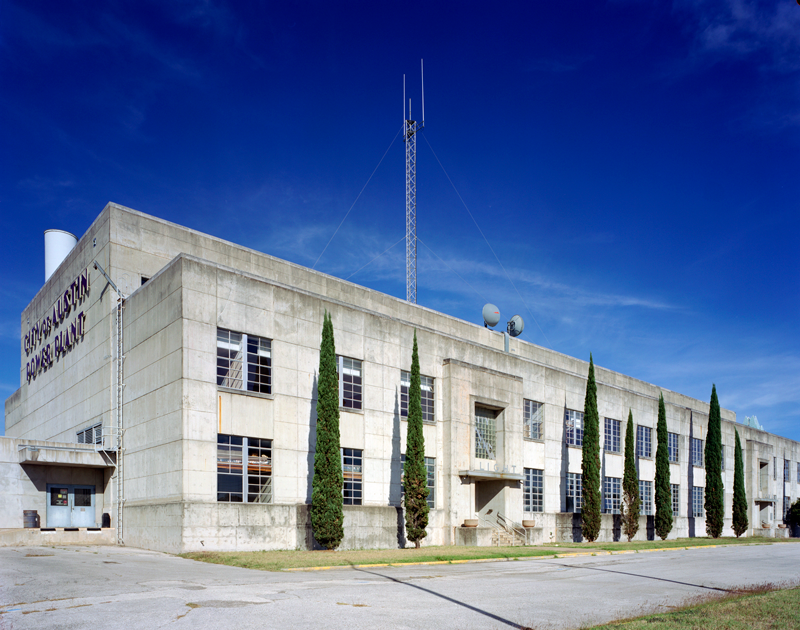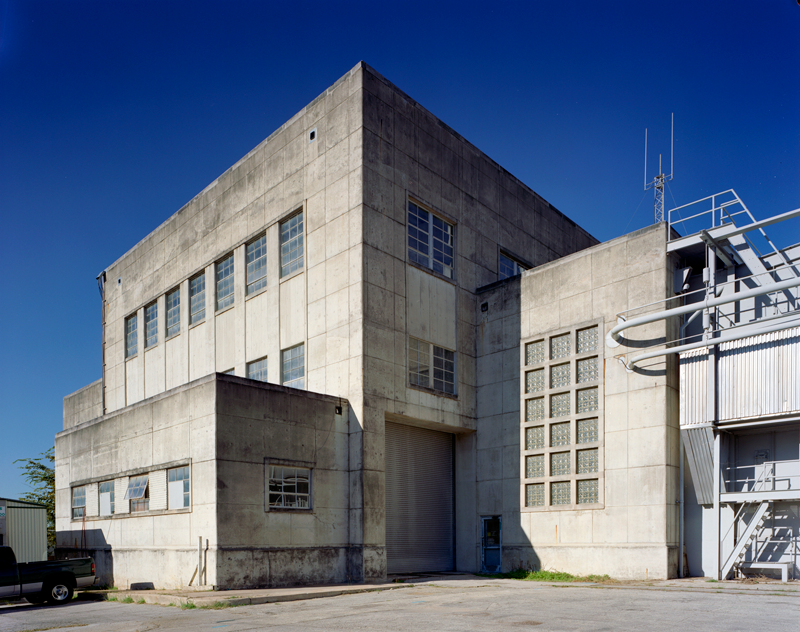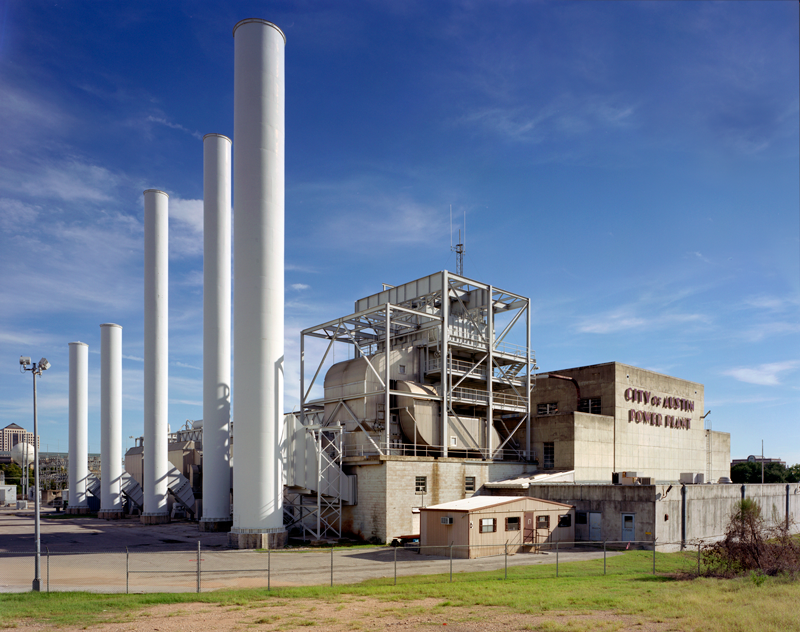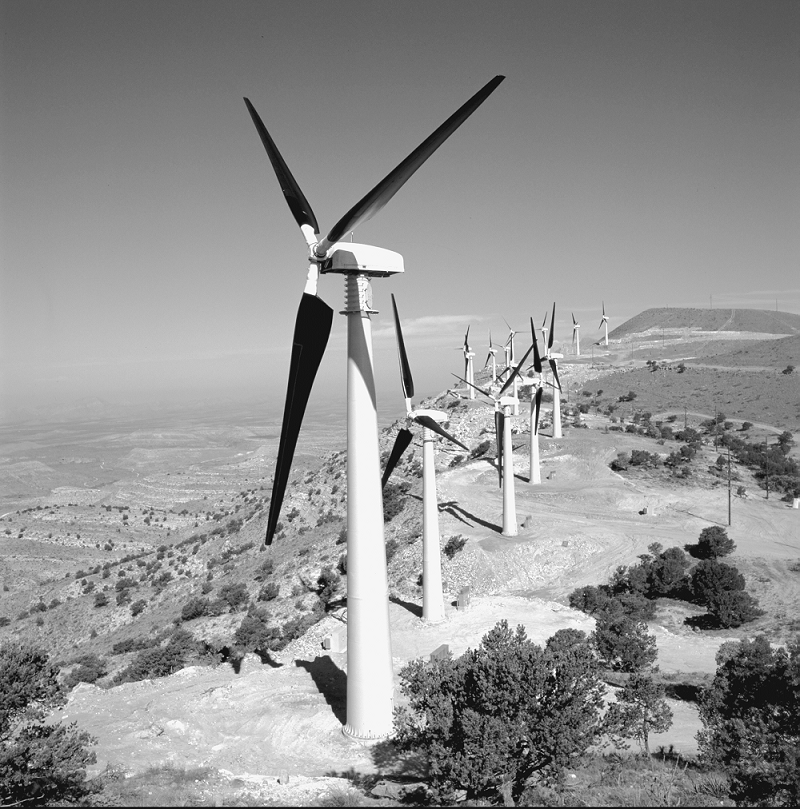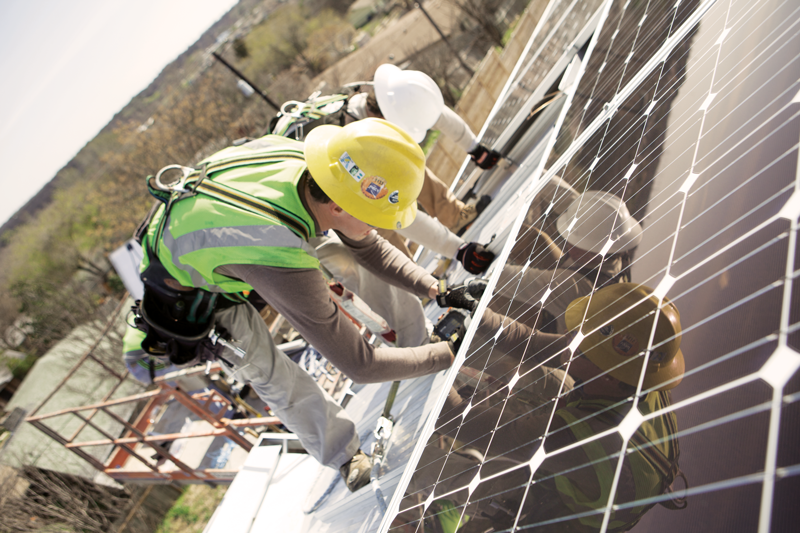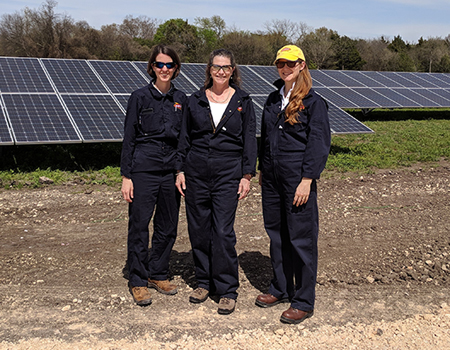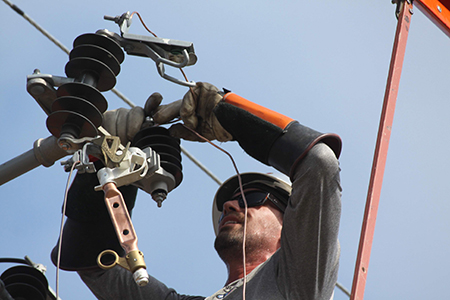A History of Austin Energy
A Vision for Austin
Austinites have owned their electric utility since 1895. Austin was a small town then, but now it’s one of the largest, most vibrant and cutting-edge cities in America.
Throughout the decades, our community has always seen its electric utility as a source of business development and affordable power. Austinites’ belief in the value of owning their utility — now known as Austin Energy — has paid off in big ways. Austin Energy has generated more than electricity — it’s helped pay for city services like parks, swimming pools, libraries, police and firefighters. Austin Energy is also considered a leader in energy efficiency, renewable energy, green building, electric vehicles, and more.
For more than a century, the citizens of Austin have helped create a community-owned utility that lights our city and builds our future.
Watch the documentary for our 125th anniversary in 2020—Lighting a Brighter Future: The Story of Austin Energy
Timeline
- 1890s
-
May 1890
Austinites vote to build waterworks and hydroelectric powerhouse on the Colorado River.
In 1890, Austinites were fed up with what they considered high prices and poor service from the privately-run water and electric company. Later that year, voters passed a bond election to build a hydroelectric dam and powerhouse to create a more controlled water supply and a source for generating electric service. Those voters believed that a utility owned by the community would help keep prices down and bring jobs to Austin.
City Population: 14,575
-
1893
Austin Dam is completed.
In 1893, the Austin Dam, designed to tame the unpredictable Colorado River, was completed. At the time, it was one of the tallest dams in the country. The lake, which subsequently formed behind the Austin Dam, was named Lake McDonald to honor Mayor John McDonald, who had helped build community support for the project.
-
May 1895
31 Moonlight towers are lit for the city's first electric street lighting system, establishing City of Austin electric utility.
By 1895, the City of Austin had completed its proposed water and electric distribution systems. In early May 1895, switches were thrown to illuminate the now-iconic moonlight towers — 31 in all — a truly historic way to mark the start of the city’s electric utility. A celebration was later held in July 1895 to officially dedicate the utility.
- 1900s — 1930s
-
April 7, 1900
Austin Dam breaks.
Unfortunately, the Austin Dam was built on unstable soil and the flows from the Colorado River did not create the amount of steady hydroelectricity needed for industry. It did not bring the type of manufacturing businesses the citizens had wanted.
Because of the poor site, questionable construction materials and inadequate planning, the dam broke on April 7, 1900. Raging floodwaters destroyed the powerhouse and knocked out electricity and water service for months.
-
April 1900
City leaders reject sale of utility.
The private water and electric company offered to buy the City of Austin’s systems and provide water and electricity to the citizens. But Austin’s leaders saw the benefits of owning their own systems and rejected plans to go back to private ownership.
Instead, Austin leaders ordered steam generators be shipped to Austin to help restore water and electric service.
-
1900s
City mired in debt due to dam failure.
The cost of building the Austin Dam and powerhouse, combined with revenue shortfalls suffered from the dam’s collapse, put city government in poor financial shape for years. Many services such as street paving were delayed and city government was forced to provide money to the utility to keep it operating.
City Population: 1910 - 29,860
-
1930s
1930s growth fastest of 20th Century.
Austin suffered the effects of the Great Depression but because of the presence of state government and the University of Texas, did better than much of the country.
The city’s population boomed during the 1930s and experienced its fastest growth of the 20th century, from 53,120 in 1930 to 87,930 in 1940. The University of Texas at Austin enrollment nearly doubled, and Robert Mueller Municipal Airport opened in 1930. A decade later, Del Valle Army Air Base opened, later named Bergstrom Air Force Base after Captain John Bergstrom, the first Austinite killed in W.W. II. The Bergstrom Air Force Base later became the site of our current Austin-Bergstrom International Airport (AUS) after the Mueller airport closed.
-
1931
Scarbrough Building first retail store west of Mississippi with air conditioning.
In 1931 the Scarbrough Building, Austin’s first “skyscraper,” a full eight-stories tall, became the first retail store west of the Mississippi with air conditioning. Along with the Littlefield Building — which at nine stories was the tallest building between New Orleans and San Francisco when completed in 1911 — helped form the city’s business district.
-
1935
1935 flood knocks out water and power service.
There were attempts to rebuild the dam and a privately-funded effort completed repairs in 1915, but another flood that year damaged the dam once again and private investors abandoned the project.
In 1935, another major flood knocked out water and power service to the city. Walter E. Seaholm, now the Director of Utilities, made his mark in Austin one more time by patching into TP&L’s system for electricity and established an emergency drinking water pump.
City Population: 1930 — 53,120
Peak Electric Use: 1935 — 8.3 megawatts
- 1940s — 1950s
-
1940
Lower Colorado River Authority builds Tom Miller Dam.
In 1940, the Lower Colorado River Authority (LCRA) built Tom Miller Dam — named for Mayor Robert Thomas (Tom) Miller — atop the remains of the two previous Austin Dam structures. Lake McDonald behind the dam was renamed Lake Austin.
The LCRA was formed as a public agency in 1934 by the Texas Legislature to manage the lower Colorado River by reducing damage from flooding and providing a stable water supply. The LCRA built a system of six dams and lakes — known as the Highland Lakes — between 1938 and 1951, effectively controlling the worst of damaging floods that had plagued residents in Austin, while providing electricity to the rural regions of Central Texas that private utilities refused to serve.
City Population: 1940 — 87,930
-
1945
Post-World War II growth increases demand for electricity.
After World War II, Austin’s larger population and lifestyle changes created a greater demand for electricity: washing machines, dishwashers and televisions were becoming more common and air conditioning was widely installed in homes and businesses.
The utility’s electric peak demand — the hottest part of the summer, resulting in the greatest use of electricity — grew 325% from 19.2 megawatts (MW) in 1945 to 81.6 MW in 1955.
Peak Electric Use: 1945 — 19.2 megawatts
-
1948
Seaholm Power Plant gets constructed.
In 1948, the City of Austin commissioned Power Plant No. 2, later renamed the Seaholm Power Plant, to meet the post-World War II growth and demand for electricity.
The power plant structures were constructed in two phases — 1950 and 1955 — on the north shore of what is now Lady Bird Lake, just west of a city-owned steam plant. The three buildings on the site — the Turbine Generator Building, Water Intake Structure and Oil Heating Plant – were built with solid concrete construction and decorated in Art Deco style.
City Population: 1950 — 132,459
Peak Electric Use: 1955 — 81.6 megawatts
- 1960s — 1970s
-
1960s
Growth reflects expansion of education and government in Austin.
Austin’s growth during the 1950s and 1960s reflected the expansion of education and government in the city.
During the 1960s, the number of students attending the University of Texas doubled and between 1950 and 1970 the number of government employees working in Travis County tripled. The City of Austin population grew by 40% between 1960 and 1970 from 185,545 to more than a quarter-million residents.
City Population: 1970 — 251,808
Peak Electric Use: 1965 — 257.1 megawatts
-
1958-1978
Critical infrastructure built to keep up with growth.
To keep up with this growth and demand for electricity, the Holly Street Power Plant in East Austin was constructed in phases between 1958 and 1974.
Longhorn Dam — named for the longhorn cattle that once crossed this location in the late 19th century as part of the Chisolm Trail — was completed in 1960. A newspaper reporter dubbed the resulting reservoir behind the dam as ‘Town Lake,’ because the lake had not been given a name.
Between 1967 and 1978, the electric utility also developed the Decker Creek Power Station in Northeast Austin. The natural gas plant added 927 MW of generation capacity.
-
June 2, 1960
City dedicates power plant in honor of Walter E. Seaholm.
On June 2, 1960, Power Plant No. 2 was renamed in honor of Walter E. Seaholm who died on December 22, 1956.
After serving as the head of the City of Austin’s utilities, Seaholm also became an Assistant City Manager and finished his distinguished career as the City Manager of Austin.
City Population: 1960 — 186,545
-
1967
Mayor Pro Tem Emma Long lights first Zilker Holiday Tree.
In 1967, Mayor Pro Tem Emma Long lit the Zilker Holiday Tree in Zilker Park for the first time (now an annual tradition marking the start of the winter holidays).
Crews with the electric utility hang 39 streamers with multi-colored lights and install two stars on top of one of the 17 remaining moonlight towers to create the Zilker Holiday Tree.
Over the years, the Zilker Holiday Tree has become an iconic part of Austin’s culture and traditions and is closely associated with Austin Energy’s passionate community involvement.
-
1970
Austin emerges as a high-tech center.
In the 1970s, Austin’s growth was fueled by its emergence as a center for high-tech.
Supported by research programs at the University of Texas, the city’s growth as a technology center increased when companies like IBM, Texas Instruments and Motorola opened facilities.
The City of Austin’s population grew 37% — from 251,808 in 1970 to 345,890 in 1980.
-
1971
Community members beautify Town Lake.
Influential community members led by Lady Bird Johnson, Les Gage and Ann Butler formed the Town Lake Beautification Committee in 1971 to beautify Town Lake and its shores.
Years of flooding, and misguided efforts to remove trees and shrubs to limit damage, left the shores with little greenery. The Committee planted more than 3,600 trees — many of them colorful redbuds similar to those in Washington, D.C.
The Committee also built a 10-mile trail (now known as the Ann and Roy Butler Hike and Bike Trail) and oversaw the construction of gazebos on Auditorium Shores and Lou Neff Point.
Beautifying Town Lake — renamed Lady Bird Lake in 2007 in honor of the former First Lady — later became part of downtown’s economic revival and an attraction that brings employers, residents, the entertainment industry and an active lifestyle to the city’s central core.
Peak Electric Use: 1975 — 681 megawatts
-
1976
Moonlight towers listed on National Register of Historic Places.
Austin’s moonlight towers were literally its first street lighting system. Austin’s 17 remaining towers, part of the original 35 first lit in 1895, were listed on the National Register of Historic Places in 1976.
Although many other cities had moonlight towers, Austin is the only city in the world that still has working moonlight towers. Because of their architectural and historic significance in Austin, protecting the moonlight towers is a priority for citizens and city government with funding approved over the years to restore and keep them functioning.
-
1977
Electric Utility Commission established with Shudde Fath as original member.
The Electric Utility Commission was created in 1977 to provide citizen oversight of the electric utility. The Commission comprises citizen volunteers appointed by the Austin City Council.
Citizen activist Shudde Fath was an original member of the Commission and served for 40 years, retiring from the Commission in 2017 at the age of 101. Shudde Fath passed away in 2022 at the age of 106.
-
1979
City becomes partners in Fayette Power Project and South Texas Nuclear Project.
In 1979 and 1980, two coal-fired units co-owned by the city electric utility and the Lower Colorado River Authority began operating in La Grange, Texas. The Fayette Power Project added 598 MW of capacity to Austin’s system.
During the 1970s and 1980s, the city utility teamed with other partner electric utilities in the state to develop the South Texas Nuclear Project. The controversial plant was plagued by protests from anti-nuclear groups and project delays that led to massive cost overruns.
City Population: 1980 — 345,890
- 1980s — 1990s
-
1982
City establishes energy efficiency programs.
After the energy crisis of the 1970s, the electric utility began offering energy efficiency rebates to customers to conserve energy and lower electric bills.
Because of Austin’s emphasis on conservation and protecting the environment, the energy-efficiency programs would garner national attention and became a model for the federal government’s ENERGY STAR program.
In 2017, Austin had the lowest average residential rates and consumption of any major utility in the Electric Reliability Council of Texas, the state’s main electric grid.
Peak Electric Use: 1985 — 1,320 megawatts
-
1991
Austin creates first Green Building program in the nation.
In 1991, the City of Austin created the first green building program in the nation, rating homes and buildings based on their energy and water efficiency, and environmental-friendliness in design and construction.
Green building ratings later became a City of Austin code requirement for all new buildings constructed downtown and paved the way for residential and office buildings with superior energy efficiency.
City Population: 1990 — 465,622
-
1992
Austin Convention Center opens downtown.
The Austin Convention Center opened in 1992 after civic leaders believed Austin was being passed over for major conventions because Palmer Auditorium – the city’s main venue at the time — was too small.
The convention center became the unofficial home for SXSW — the internationally acclaimed music, multimedia and film festival — that draws hundreds of thousands every year from throughout the world.
In 2002, work was completed on expanding the convention center to almost double its size. The Austin City Council changed the name of the center in 2004 to the Neal Kocurek Memorial Austin Convention Center to honor the late Dr. Neal Kocurek who help build community support for the original construction.
-
1995
City electric utility celebrates its centennial.
Austin’s electric utility celebrated its centennial in 1995 with events surrounding the restoration of the moonlight towers.
In 1996 the City of Austin Electric Utility Department rebranded itself with a new name: Austin Energy.
Peak Electric Use: 1995 — 1,766 megawatts
-
1996
Seaholm Power Plant decommissioned for redevelopment.
In 1996, the Seaholm Power Plant was decommissioned. Austin Energy had newer plants that were more efficient and economical.
In 2004, the Austin City Council voted to accept proposals to redevelop Seaholm for other uses and in 2008, a master plan was approved. The Seaholm Power Plant was listed on the National Register of Historic Places in 2013 for its architectural and historic significance in Austin.
- 2000 — present
-
2001
Austin Energy launches GreenChoice renewable energy program.
By the beginning of the 21st century, Austin Energy had developed a growing reputation as a national leader in renewable energy.
The utility launched the GreenChoice renewable energy program in 2001 and it quickly became the top program in the country for sales to customers eager to buy electricity from renewable sources like wind power.
City Population: 2000 — 656,562
Peak Electric Use: 2000 — 2,383 megawatts
-
2004
Austin Energy starts solar rebate and electric vehicle programs.
The utility launched the Solar Rebate Program in 2004 to offer incentives to residents, businesses and non-profits to install solar panels on their properties.
In 2006, Austin Energy led the Plug-In Partners National Campaign to promote electric vehicles and convince automakers there was a market for electric vehicles. In 2011, the utility created the Plug-In EVerywhere network to offer residents a way to charge electric vehicles at public charging stations throughout the Austin community.
Peak Electric Use: 2005 — 2,445 megawatts
-
2010
City Council passes one of most ambitious generation plans in the U.S.
In 2010, the Austin City Council passed one of the most ambitious renewable energy goals in the country by directing Austin Energy to deliver 35% of its electricity from renewable energy sources by 2020.
Austin Energy met the goal three years early and set a new goal of 65% renewable energy by 2027.
City Population: 2010 — 790,390
Peak Electric Use: 2010 — 2,628 megawatts
-
2017-2018
New Austin Central Library opens downtown.
The community celebrated the opening of the new Austin Central Library in 2017 on property that was once part of the Seaholm substation. The library serves as a prominent public facility in the redeveloped power plant area known as the Seaholm District downtown.
In 2018, the Austin Central Library was selected by Time Magazine as one of the World’s Greatest Places, a list of 100 places that break new ground, lead industry trends, and offer visitors a great experience.
City Population: 2015 — 900,701
-
2019
Austin Energy breaks ground on a new headquarters building.
In 2019, to keep up with the community’s needs and a changing electric industry, Austin Energy broke ground on a new headquarters building, bringing staff from three buildings across the city into one. The 200,000+ square foot building is LEED Platinum certified, Austin Energy Green Building 5-Star certified and WELL Building Institute™ Platinum certified.
-
2020
Austin Energy marks its 125th Anniversary.
In 2020, Austin Energy marked its 125th Anniversary with no celebrations as the world experienced the COVID-19 pandemic. City of Austin Utilities provided more than $13 million in emergency financial assistance to nearly 16,000 customers struggling to make ends meet.
-
2021
Texas is hit with historic Winter Storm Uri.
In February 2021, Texas was hit with the historic Winter Storm Uri. The Electric Reliability Council of Texas (ERCOT), was unable to meet electric demand and directed a series of load sheds between February 15–18. Austin Energy faced these challenges, along with hazardous and sometimes impassable roads, and kept critical facilities energized while providing local generation that helped prevent a catastrophic grid failure in the ERCOT region of Texas. Approximately 220,000 Austin Energy customers were without power at different points, including some for several days.
-
2023
Winter Storm Mara leaves a lasting impact.
Then in February 2023, Winter Storm Mara, a catastrophic, hurricane-level ice storm, greatly impacted Austin Energy’s customers. In the wake of the storm, a peak of more than 170,000 customers were without power, 10.5 million trees were damaged and call center representatives received 370,000 calls. After these two historic winter storms, Austin Energy and the City of Austin identified and implemented actions to help better prepare for a similar type of extreme and prolonged events.
-
2024
Austin City Council adopts Resource, Generation and Climate Protection Plan to 2035.
In December 2024, the Austin City Council unanimously adopted Austin Energy’s Resource, Generation and Climate Protection Plan to 2035, addressing the immediate risks affecting our community, including increased electricity demand, projected reliability risks from insufficient local generation, limited capacity on transmission lines and risks from extreme weather events.
-
2025
Austin Energy celebrates its 130th anniversary.

